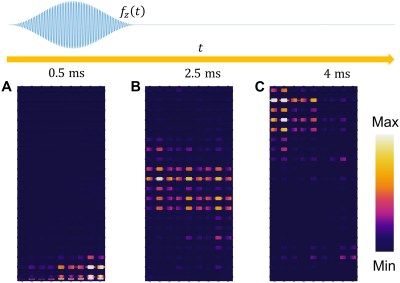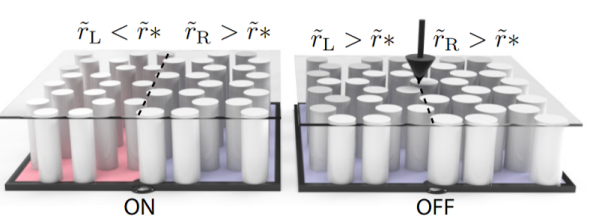Although it is generally assumed that surface elastic waves (vibrations) — such as those of earthquakes — will travel mostly unimpeded until their energy dissipates, there are ways to ‘steer’ this energy using metamaterials.

(A to C). The magnitude of total displacement field at 0.5 ms, 2.5 ms, and 4 ms, respectively. A 50-cycle tone burst signal centered at 41.88 kHz is simulated on the bottom supercell. (Wang et al., 2023)
A recent study by [Shaoyun Wang] and colleagues in Science Advances details how a carefully modelled grouping of columns creates what is termed a synthetic dimension. In their experimental setup, it is demonstrated how an applied wave is guided across the metamaterial, rather than spreading out the way which we would expect to see in conventional materials.
Interestingly, in the paper it is also demonstrated how the same technique can be used to create a wave-splitter that diverts the wave energy in two distinct directions. Due to the innate resistance of this type of structure to defects, manufacturing it is not too complicated.
In this experiment the metamaterials were milled out of a block of aluminium on a CNC mill, which makes it seem eminently realistic that it could be scaled up and translated to other applications. Conceivably annoyances like vibrations from road traffic and heavy machinery, all the way up to the destructive energies of earthquakes could one day be reduced, redirected or even extinguished using structures as demonstrated here.












